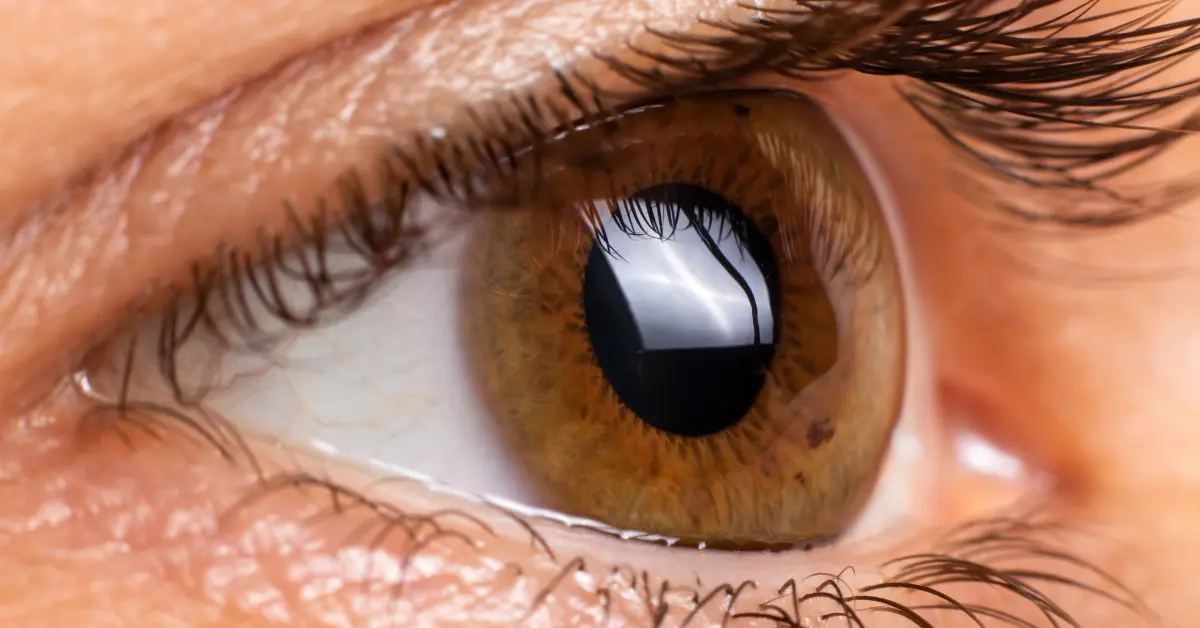Causes of Corneal Ulcer: A Complete Guide
A corneal ulcer known as keratitis is an open sore or infection in the corneal epithelium.
The condition arises when environmental bacteria, viruses, and fungi enter the cornea, leading to inflammation.
This inflammation can result in ulceration.
According to Zhongwen Li et al., A corneal ulcer is the most common cause of corneal blindness worldwide.
It can also stem from noninfectious conditions like minor injuries or autoimmune diseases.
In this article, you will learn about the infectious and noninfectious causes of Corneal Ulcers.
Infectious Causes of Corneal Ulcers
The leading cause of Corneal Ulcers is infections.
Several different infections can cause an ulcer, including
Bacterial Infections

Bacterial corneal ulcers result from the infiltration of bacteria after a crack in the corneal barrier.
According to the AAO, it is the most common infection in people who wear contact lenses.
This is true, particularly for those who use lenses for a longer period of time and take improper care of lenses.
Although any bacteria may cause Keratitis, four main groups of bacteria are primarily responsible, including
- Micrococcaceae
- Streptococcaceae
- Pseudomonas,
- Enterobacteriaceae
These organisms are responsible for 80% of bacterial Infectionserial keratitis cases.
Injury or damage to the eyes, such as scratches, cuts, or chemical burns, can also result in bacterial infection.
Viral Infections
Viruses can flare up and cause Shingles and Herpes Simplex Keratitis.
Herpes Simplex Keratitis may cause recurring attacks and can be very contagious.
Viruses can be triggered by stress, trauma, fever, and specific drugs as it weakens the immune system.
Fungal infections
The fungal infection appears following a corneal injury caused by a plant or plant material.
After the corneal injury, fungal pathogens may enter the cornea.
The injury leads to inflammatory responses.
People with a weakened immune system are also at risk of fungal keratitis if they come into contact with fungi.
Due to the high humidity of the monsoon and early winter, fungal infections tend to increase.
Also Read: To learn more about Fungal Corneal Ulcer, read our article “Fungal Corneal Ulcer: A Comprehensive Guide.”
Parasitic infections
Parasites like amoeba can damage the cornea.
This damage can further infect the cornea and cause Keratitis, particularly for contact lens wearers.
Acanthamoeba and Microsporidia are the most common causes of parasitic infections.
Noninfectious causes
A noninfectious ulcer may result from minor damage or a foreign body in the eye.
It might also appear on its own.
They are also associated with autoimmune disorders like collagen vascular diseases and Moorens ulcers.
Steroid eye drops

Using steroid eye drops to treat an eye disorder can increase or worsen your risk of developing infectious Keratitis.
Steroid eye drops may cause corneal thinning, which in turn may worsen the infection.
Vitamin A deficiency
Lack of vitamin A can dry the eyes, leading to cornea damage.
It also makes it harder to fight infections.
One of the main causes of blindness worldwide is Vitamin A deficiency.
Takeaway
A corneal ulcer is mainly caused by Infections like bacteria and viruses.
It can also stem from noninfectious causes like autoimmune disorders.
Some minor injuries in the cornea might lead to Keratitis.
It is also one of the leading causes of blindness, depending on its severity.
One should always consult with an eye specialist if these conditions are found.
Frequently Asked Questions
What causes a Corneal Ulcer?
Infections like bacteria, viruses, fungi, and parasites are the causes of corneal ulcers. Noninfectious causes include chemical burns, blepharitis, and autoimmune diseases.
What virus causes corneal ulcers?
Viruses like Herpes simplex virus, herpes zoster, varicella virus, and adenoviruses are the causes of corneal ulcers. HSV-1, which also causes cold sores in the mouth, is the most common cause of corneal infections.
Can stress cause corneal ulcers?
Stress and a weak immune system may cause the Herpes Simplex Virus, a viral infection that may lead to Corneal ulcers.
Who is at risk for corneal ulcers?
People wearing contact lenses are at significant risk of Corneal ulcers, along with those that had chicken poxes or cold sores in the past.
WowRx uses only high-quality sources while writing our articles. Please read our content information policy to know more about how we keep our content reliable and trustworthy.






